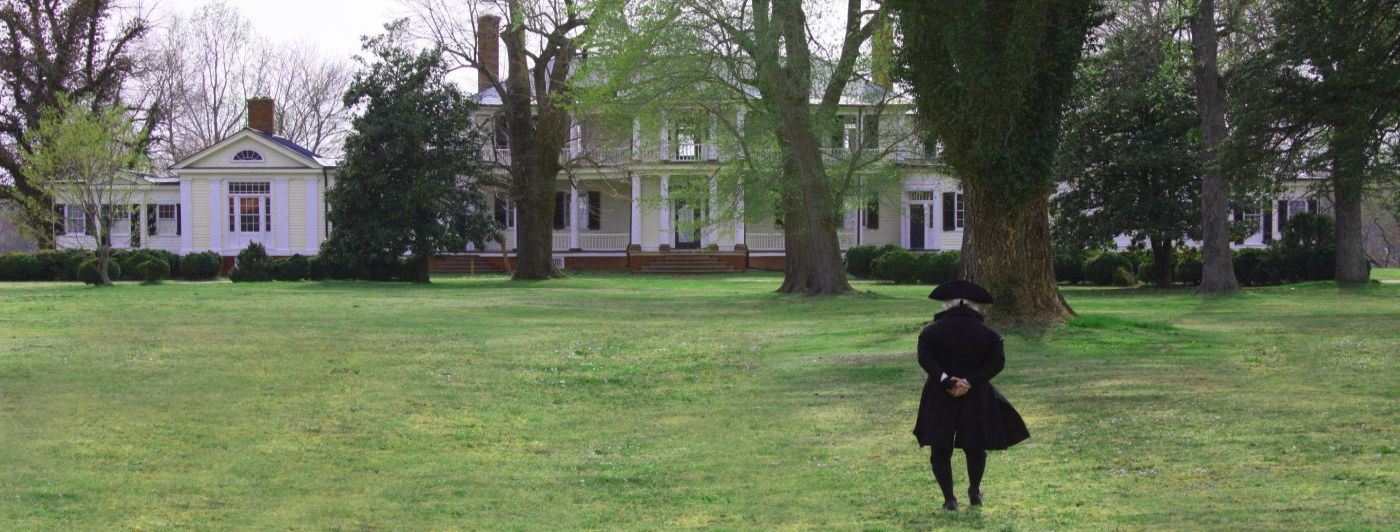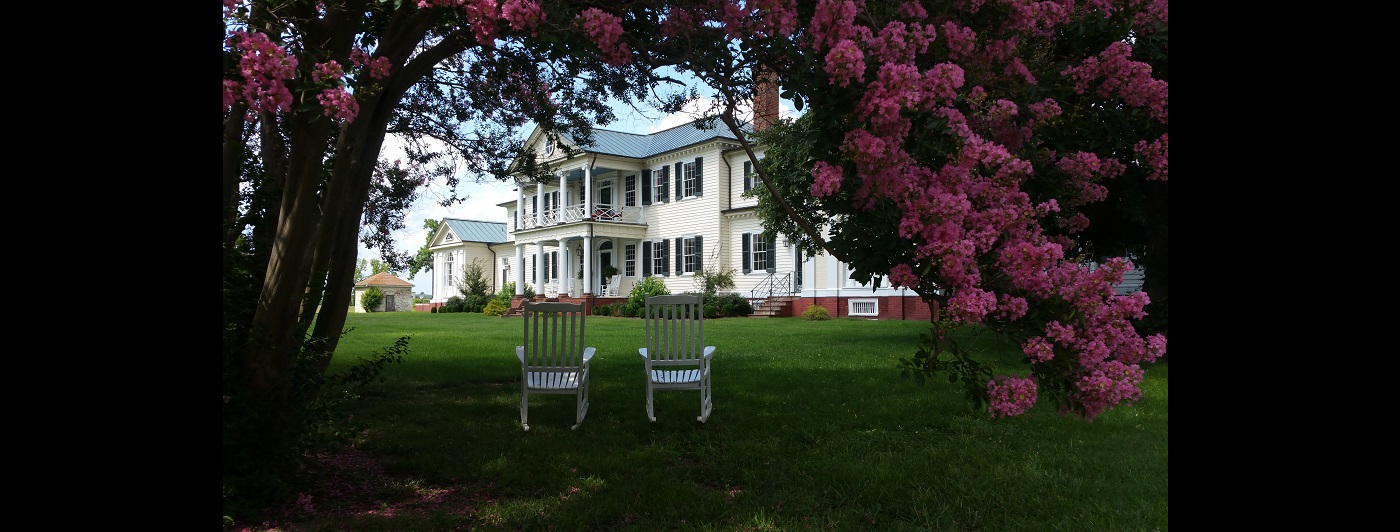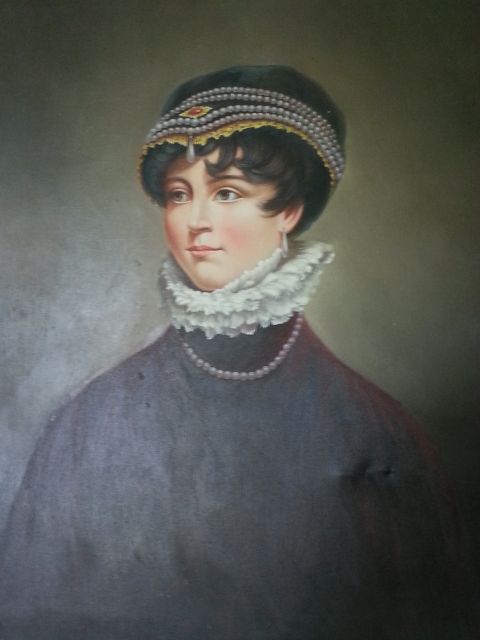Sarah Elizabeth Has A Story To Tell
Recently we held two contests to name and give history to one of our newest portraits. After 195 names suggestions, Dolley Madison of Montpelier narrowed it down to just ten. We opened voting to the public on Facebook and she received her name as Sarah Elizabeth.
We also needed her history so we could tell those that visit where she came from and how she came to be at Belle Grove Plantation. The contest rules were that it needed to be a short story (2500 to 7000 words) and had to incorporate her history into a time period and people of Belle Grove Plantation without making her a relative. We didn’t want to get her history confused or mistakenly added to the true history of Belle Grove Plantation.
The contest ended on September 30th with so many stories that it took us longer than we expected to read them all! They were all very good and really brought Sarah Elizabeth to life. And we really wish would could pick all of them! But after much thought, we have selected the story by Jean Marie Moore Graham of Virginia. Jean will be receiving a free night in the Conway Junior Suite where Sarah Elizabeth is now.
Congratulation Jean!
Below is her short story.
SARAH ELIZABETH’S PORTRAIT
In 1698, upon the death of her grandfather Captain Anthony Savage, Elizabeth Thornton Conway received 700 acres of what is now Belle Grove Plantation in King George County, Virginia. It remained Elizabeth Conway’s property until her son, Francis Conway I became of age and inherited it in 1717. About this same time, Francis Conway I and Rebecca Catlett were married and during the next few years had six children. Then, in 1736, Francis died. A year later, the widow Rebecca met and married John Moore, a widower and well-known businessman who was living in the Port Royal area in the Colony of Virginia.
Not much is known about John Moore although some researchers claim his family may have settled in the southern part of the Colony of Virginia. However, no records have been found to prove this. As time passed, most people came to believe the story that followed him to the Port Royal area…that he was from the south, that he was a widower with a young daughter, Jane, and that he also had with him a young girl, Sarah Elizabeth, who had become his ward about ten years earlier after both her parents were killed. After John’s wife died, he and both girls had moved to a boarding house in Port Royal. Then, in 1737, after John married Rebecca Catlett Conway, they all moved to her homestead on the King George County side of the Rappahannock River. Records show that around this time, the plantation property began being referred to as Belle Grove. Perhaps John thought the place needed a new name — a name that was easier to remember and easier to pronounce than “Mangecemuzen,” the Indian name it had been called in earlier times.
Sarah Elizabeth was probably about sixteen or seventeen when John Moore and Rebecca Conway were married. Sarah was long remembered by those who knew her as being quite lovely with green eyes and dark hair. After John and the family had settled at Belle Grove, many people noticed how quiet Sarah was and often commented on how sad she seemed. She had been part of John’s family since she was very young and was likely still brooding over the loss of his wife. At other times, she seemed rather impetuous and house servants were often puzzled, never quite knowing what she might say or do next. Friends and family claim Sarah stated many times that she had no intention of ever marrying anyone. As she became more carefree and adventurous, family members and acquaintances worried about her safety because she was so strong-willed. She was very headstrong and would do whatever she wanted, often alone. As time went on, although Sarah Elizabeth’s mood swings were less, the family continued not knowing what to expect of her. The house servants whispered about her boldness and her ever-changing personality. They, too, wondered and worried about what she might say or do next.
Apparently, Sarah Elizabeth soon learned to love life on the plantation where she was now feeling free and content. Everyone talked about how she loved watching the abundance of wildlife at Belle Grove and how she would sit and gaze at the river for hours at a time. She was excited to wander into the yard at evening time where she would usually see deer grazing or rabbits scurrying by. She spent hours reading to little Jane and teaching her the art of stitchery. Likely, Sarah had learned to read and write at an early age and she was very adept at needlework. As time passed, Sarah also spent time helping to care for little William, John and Rebecca’s new son. She also liked to garden but was discouraged from working in the Belle Grove garden. The house servants claimed they often had to lead her away while trying to make her understand that gardening was their task and not hers. Often she would sit quietly near the garden watching the servants as they pulled weeds and gathered vegetables. As time went on, she grew more pleasant and warmhearted. Everyone soon realized Sarah Elizabeth was no longer lonely and that her days of sadness and brooding were gone.
And, so the story of Sarah Elizabeth continues. One day while she was visiting friends nearby, she was introduced to a young man who had traveled to Port Royal on business. His name was Thomas Smithson and he was from a northern city, a place where she had never been and had only read about: Baltimore. He claimed that he worked as a cooper and that he had sailed to Port Royal with a load of barrels and tubs. Sarah had never met a cooper before. No one seemed to know much about this man called Thomas. He seemed a bit mysterious and Sarah Elizabeth was enthralled. Thomas was tall with dark hair and bright blue eyes. He was polite with a keen sense of humor. He made her laugh. Household members and servants were aware that the two of them spent hours walking through the grounds at Belle Grove. They watched as the couple picked wildflowers and strolled along the edge of the lawn near the river, often holding hands. Sarah was granted permission to invite Thomas to dine with the family and he accepted her invitations several times. Everyone seemed to enjoy his company. Still, no one really knew much about this cooper named Thomas Smithson. Who was he? Did he have good intentions?
Although at first she pretended to have no marked feelings for him, it was apparent that Sarah was quite smitten with Thomas, as he was with her. He stayed in the Port Royal area for several days and finally, when he told her he had to leave, she promised she would write to him. He gave her the details of where he would be and promised he would return as soon as he could. Then, so the story continues, he looked into her beautiful green eyes and asked if she would consider having her portrait painted. He told her he would make arrangements to have it sent to him if for some reason he couldn’t get back to the Virginia Colony right away. Sadly, Sarah then accompanied Thomas to the road that led to the river where a ship would take him back to Baltimore. She desperately wanted to believe that Thomas would return to Belle Grove and to her. But, she finally decided that should he not return she did want him to have a portrait of her. She was determined to remind him of the wonderful time they had during their days together at Belle Grove. A portrait would surely help. Everyone knew Sarah was in love, although she wasn’t quite ready to admit it.
Soon she heard about a traveling artist heading for the village of Port Royal across the river from Belle Grove. Sarah couldn’t believe this exciting news…this artist was a portrait painter! Not wanting to be too impetuous, she thought about this news for a day or two. Finally, she decided it was time to have her portrait painted. She sent word by one of the family servants to a friend in Port Royal asking to be notified when the traveling artist arrived. A few days later, when she heard that he was there, she crossed the Rappahannock River to meet with him, accompanied by the servant girl, Mary. The artist’s name was Rufus. He was tall and thin with squinty dark eyes and a beard. It was impossible to guess his age. He was dressed in dark high-waisted breeches and a paint-splattered shirt and carried a satchel filled with brushes and small containers of paint. He truly looked like an artist and he was friendly and polite. Sarah was excited when he told her that he would come to Belle Grove to paint her portrait and for her to be ready by the end of the following week. After chatting for a few minutes, they decided on the size portrait she thought Thomas would like. Certainly, Rufus reminded her that posing would be stressful as she would have to sit still for hours at a time. He also likely reminded her to be ready when he arrived, dressed in whatever she decided was the right attire. And, he would have reminded her that she would have to wear the same clothes and headdress each day until the portrait was finished.
According to Mary, when she and Sarah got back to Belle Grove, Mary helped her try on dress after dress. First, Sarah donned a dress with a green satin bodice. She decided it was not the look she wanted. Then she tried a black cotton dress trimmed with rows of soft flat lace. Nothing seemed to be what she had in mind. She finally decided on a rather plain dark-colored dress. With Mary’s help, she fastened an elaborate ruffled collar to the dress. Sarah asked Mary to help her try some different hair styles. She insisted that Mary snip some of her hair a bit shorter so she could brush it softly around her face. She was anxious to make a good impression on Rufus, the artist, and she wanted to look her best for the portrait. After much deliberation, she decided to wear a strand of pearls and a beaded headdress that had once belonged to her mother. It was adorned with strings of pearls creating a beautiful contrast on her dark hair. Sarah knew this elaborate headdress, along with the ruffled collar, would draw attention to her face. She had been told that many itinerant artists were quite skilled and painted with great attention to the face, especially the eyes, in order to capture a good likeness. If the likeness was extraordinary, word would spread quickly and the reputation of the artist would grow. Rufus finally arrived and somehow, Sarah Elizabeth knew that the two of them would work well together. And, so they did.
Sarah Elizabeth sat in a chair for many hours over a period of several days. Her back ached and her arms grew stiff. Many times, she desperately wanted to close her tired green eyes and take a long nap. Mary watched as she sat quietly with her hands folded in her lap knowing that because of Sarah’s promise to Thomas she would persevere. Surely, Sarah thought about Thomas constantly knowing the portrait would make him happy. Finally, the portrait was done. It was beautiful and Sarah was elated. And, according to Mary, Rufus seemed quite satisfied that he had painted a fine portrait. Mary watched as Sarah thanked Rufus profusely and paid him his expected fee. Sarah spent the next few days trying to decide how to get the portrait to Thomas. But she procrastinated and the portrait stayed in the parlor leaning against the wall above the fireplace mantle. Time seemed to stand still for Sarah.
The story continues: Months passed and one day while sitting out on the lawn staring at the river, Sarah Elizabeth heard a horse and buggy approaching. She rose quickly and ran to greet the visitor. To her surprise it was her beloved Thomas Smithson riding up, unannounced. Of course, she was excited beyond words! During the next few days, they spent hours and hours together, holding hands and whispering. Neither Sarah nor Thomas realized that the servants were watching their every move, as was young Jane. The couple walked their favorite paths, often strolling for an hour or more without speaking a word. Then, sometimes they would chatter and laugh uncontrollably. It was likely about this time that Sarah and Thomas finally admitted to one another that they were in love and that they wanted to be together forever. But, for some reason, they weren’t ready to share this news with friends or family. Apparently, the two of them were plotting to run away together…perhaps to be married. Who knows?
According to Mary, the servant girl, she watched one morning as Sarah Elizabeth gathered a few clothes, along with the pearl-adorned headdress and ruffled collar, and hurriedly tossed them into a large velvet bag. Sarah had also grabbed several shillings from a secret hiding place, stashing them in a small red and gold reticule. She waved to Mary and gave Jane and little William quick embraces before running out the door. She and Thomas had told no one their plans and off they went, carriage wheels churning up clouds of dust as they drove off. Mary, the servant girl, watched with tears in her eyes from behind a curtained window as Sarah and Thomas drove away, heading north. In her heart, Mary knew they were gone for good. She was right — they were never heard from again. Did they get married? No one knows. No one knows if she remained Sarah Elizabeth, the ward of John Moore, or if she became Sarah Elizabeth Smithson, the wife of Thomas.
People talked for months about Sarah Elizabeth and Thomas and their hasty departure. Certainly, John Moore was quite distraught, as was the entire family. They all loved Sarah and thought of her as a member of the family. They were all sad and concerned. Why had the young couple left so suddenly? What might have happened to them? However, remembering that Sarah Elizabeth did have an impetuous personality, many people weren’t entirely surprised. Even though they tried to imagine that Sarah and Thomas were happy and living a new life, family members were shocked and disappointed that they had not been informed of any plans. John sent out search parties several times during the following months. Sadly, no one could find the impulsive, love-struck couple. Occasionally there were rumors that the two of them had been seen in Baltimore. However, there is no record that anyone at Belle Grove, nor any nearby friends, ever heard a word from either of them.
Time went by and one day the heartbroken John decided to remove Sarah’s portrait from where it leaned on the mantle. He hung it permanently in the parlor at Belle Grove where it remained for many years. John died in 1749 never knowing what happened to Sarah Elizabeth. John’s widow, Rebecca, until the day she died in 1761, likely continued to wonder what might have happened to Sarah and Thomas. To this day, no one knows where they went or why they left without telling anyone their plans.
Many years have passed and Sarah Elizabeth’s lovely portrait has now been moved to Belle Grove’s Conway Room. Visitors to the beautiful Belle Grove Plantation agree that the mysterious portrait depicts her as calm and content. Yet, she has left us with a secret…a puzzling and intriguing story. No one knows the answer. Meanwhile, the portrait hangs for everyone to admire. Guests will gaze at the portrait and wonder about Sarah Elizabeth for years to come. And, surely her lovely green eyes will continue to keep a keen watch on Belle Grove.


















